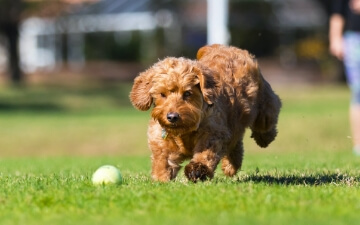
New Puppy Essentials
You know you’re getting a puppy, but you haven’t brought them home yet. This is the perfect time to get your house prepared for a new dog. It’s essential to have your home ready when your puppy arrives to make the transition as easy as possible for you and your new pet. Here’s everything you should add to your new puppy shopping list before you bring them home:
Dog Bed
To choose the right bedding material, consider your puppy’s breed. Do they get cold easily? Are they notorious chewers?
Dog Crate
Determine the proper size by measuring their standing height and length, then add 4 inches to each.
Food and Water Dishes
There are many reliable materials to choose from, but stay away from plastic dishes, which can easily harbor bacteria. Opt for stainless steel, silicone, or ceramic.
Dog Food
Talk to your vet about finding the correct type for your puppy’s breed and weight.
Dog Collar
Remember to ensure your emergency contact information is displayed on their collar or tag.
Dog Toys
Find soft, appropriately sized toys to give your new puppy a fun way to release energy and bond with you.
Puppy Gates
Keep your puppy out of unsafe or off-limits areas of your house.
Dog Grooming Supplies
Keep items like clippers and brushes at home for when your puppy inevitably gets messy or needs to be groomed.
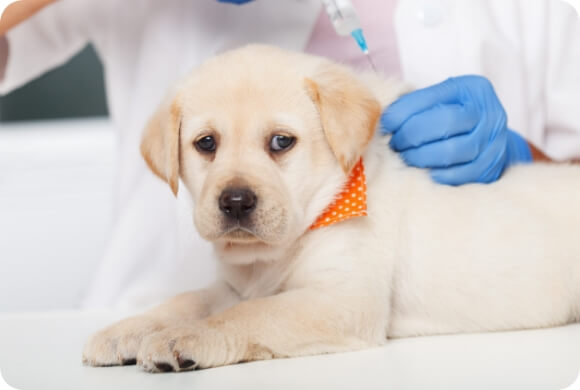
Vaccinations
Vaccines are designed to trigger a specific immune response that will help protect your puppy from illness down the road. Ask your vet what vaccines they recommend for your pet. They may recommend vaccines against the following viruses:
- Canine distemper virus
- Canine adenovirus
- Canine parainfluenza virus
- Rabies virus
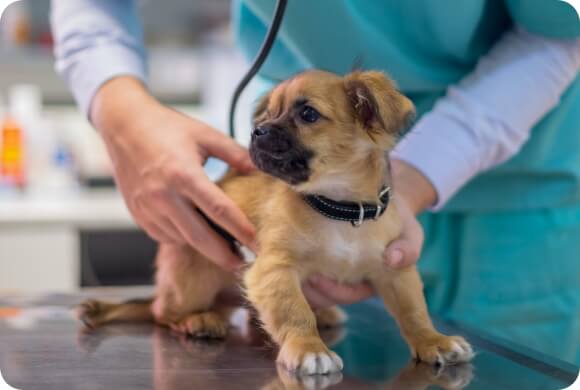
Heartworm Prevention
Just one bite from an infected mosquito can lead to heartworm disease—a serious danger to your dog’s health. You can begin administering heartworm prevention around 6-8 weeks of age. Ask your vet about different types of heartworm prevention for your new puppy.
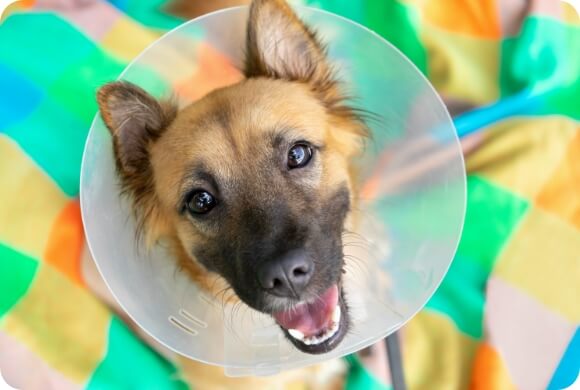
Spay or Neuter
Spaying or neutering your puppy when they reach the proper age is important for their health and behavior. We recommend talking to your vet about the right age to spay or neuter your puppy.
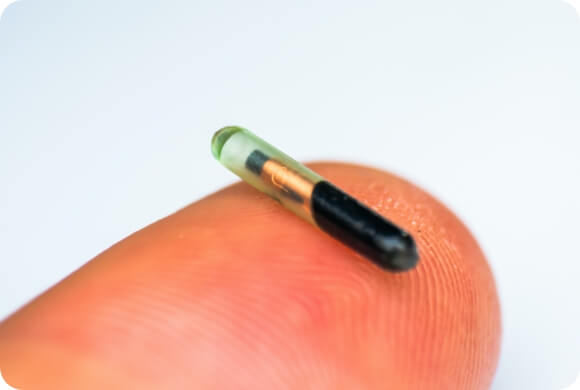
Microchip
If your puppy runs away, microchipping them can be the difference between reuniting with them and losing them forever. A study of 7,704 stray animals showed that dogs without microchips were returned to their owners 21.9% of the time, whereas microchipped dogs were returned 52.2% of the time.1 Better still, even though it’s not covered by pet insurance, microchipping is relatively affordable and typically ranges around $25 to $60.
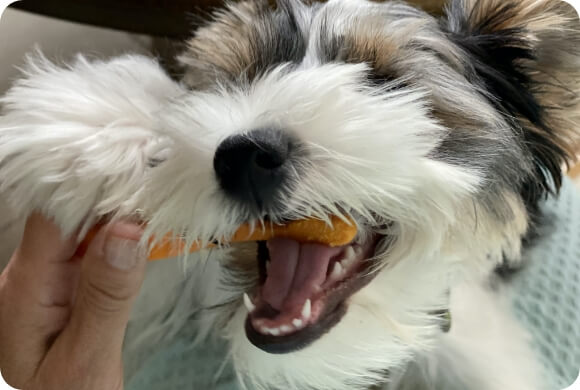
Oral Care
Dental hygiene is another major facet of your puppy’s health. Poor oral hygiene can lead to serious issues. Getting them used to teeth brushing at a young age can help make their oral hygiene routine easier to maintain as they get older. A dental schedule may sound high maintenance, but fortunately products like dental chews accepted by the Veterinary Oral Health Council can help maintain oral health in between regular dental checkups at the veterinarian.
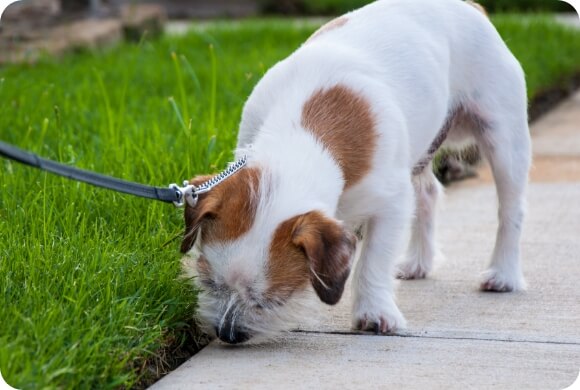
House Training
Consistency is key for house training your pup. You’ll want to have a dedicated space for them to live so they learn that they need to go outside to relieve themselves. Keeping them on a set schedule of eating and leash walks can help them become potty trained faster.
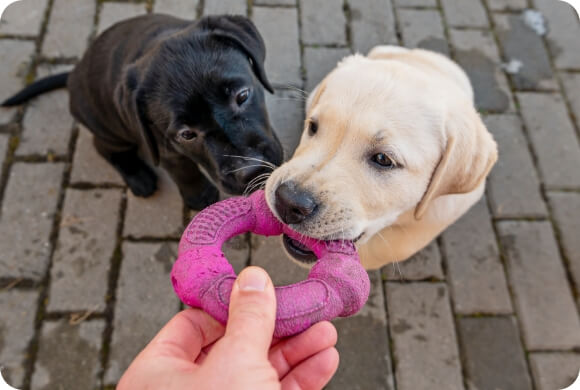
Chewing Phase
Most puppies go through a teething phase. Provide them with high-quality, age- and size-appropriate teething toys to help protect them and your belongings (they’ll chew anything they can get their tiny mouths around). With training and time, this phase should eventually pass— typically around 8 to 9 months of age.2
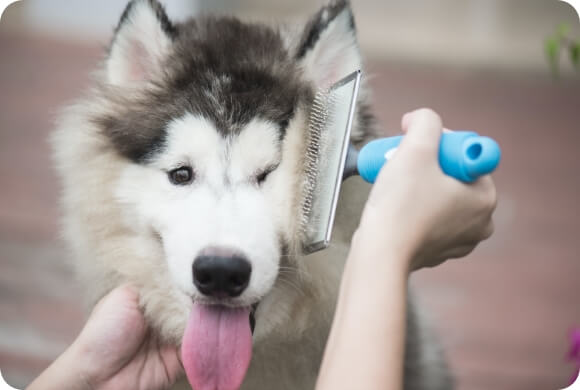
Puppy Fur
Don’t be alarmed when your puppy sheds their first coat. Sometimes it can change their appearance drastically, even changing the color of their coat! Puppy shedding is normal. To help reduce hair around the house, make sure to keep them on a regular grooming and fur brushing schedule. A lint roller and vacuum can help keep the house and your clothes tidy.
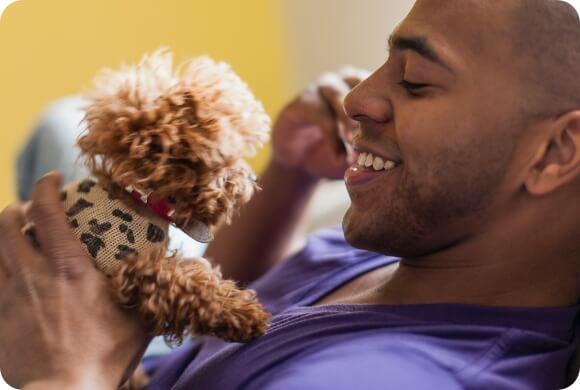
Getting Your Puppy Comfortable
A bond between dog and human is a truly special gift. The amount of trust they have in you, other people, and other puppies starts when they’re young. Give your puppy ample care, affection, and socialization to help build trust between you and to help them grow into well-adjusted dogs.
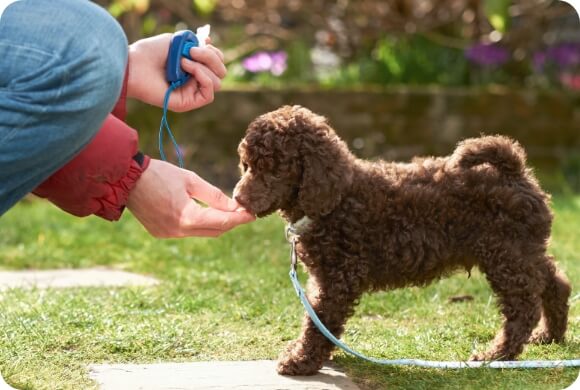
Training Your Puppy
Training your puppy while they’re young can help them stay safe and well-behaved later in life. Start with simple, short-phrased commands like sit and stay. The trick for training is positive reinforcement and consistency. Rewarding them with affection and treats is an excellent way to encourage good behavior.
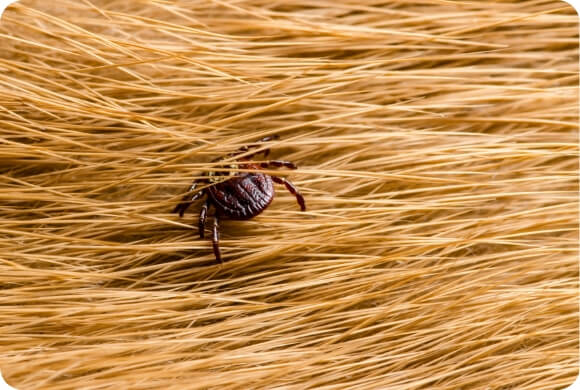
Fleas and Ticks
Fleas and tick are more than nuisances. They can cause infestations and carry diseases that can be dangerous for your puppy. And, contrary to popular belief, they can pose a threat both outdoors and indoors. That’s why it’s essential to use veterinarian-recommended flea and tick protection to help protect your pup.
References
- 1. Wuest, P. Poll: Have the majority of your clients gotten their pets chipped? Today’s Veterinary Practice. Accessed August 25, 2022. https://todaysveterinarypractice.com/news/poll-have-the-majority-of-your-clients-gotten-their-pets-chipped/
- 2. When Do Puppies Lose Their Teeth in Boxborough, MA? Veterinary Dental Services. Accessed August 25, 2022. https://veterinarydental.com/puppies-lose-teeth-boxborough-ma/
Related Articles

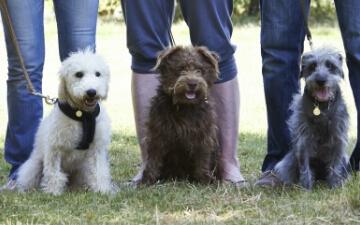
Canine infectious respiratory disease complex (CIRDC), known to many dog owners as kennel cough, is a highly contagious respiratory...


Regular vet visits are essential to keep your dog healthy. But just how often do you need to go?...


Heartworm disease in dogs occurs after heartworms are transmitted from mosquitoes. Heartworm disease causes…

